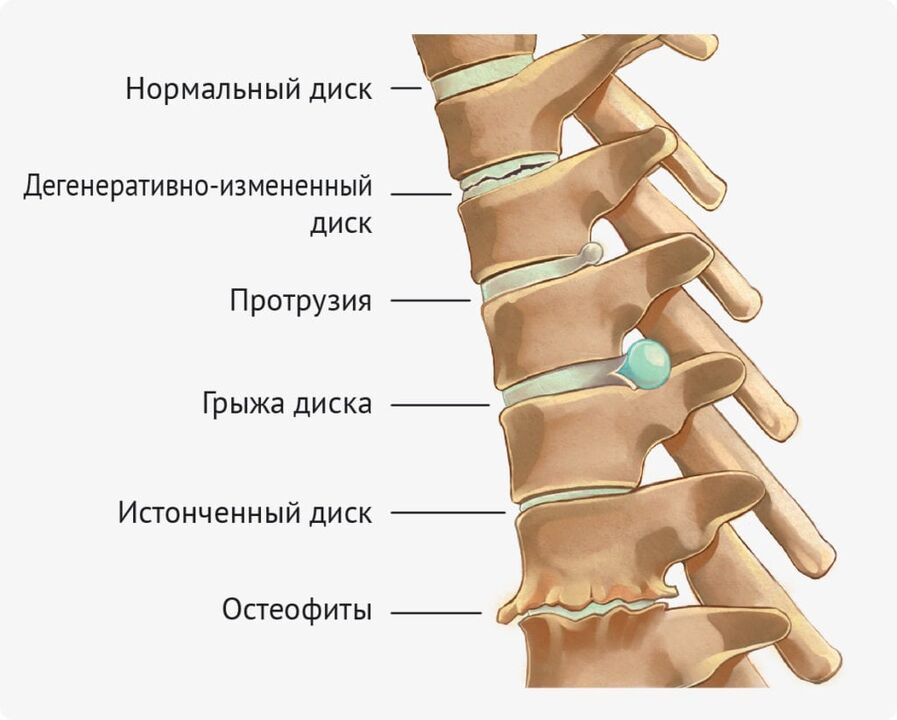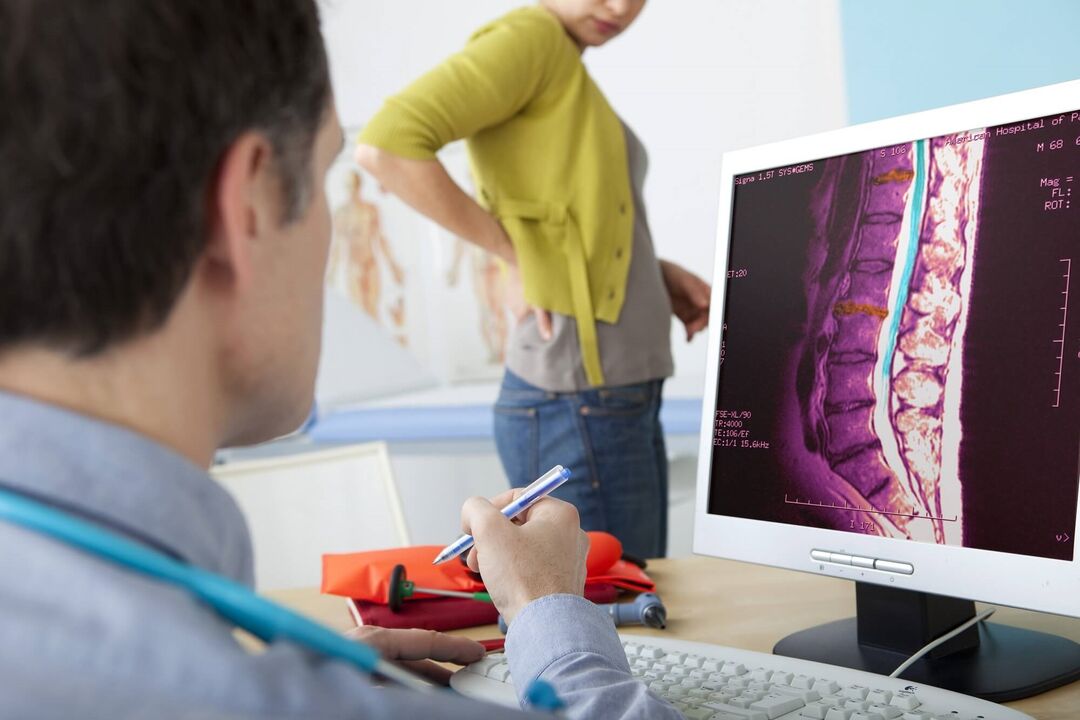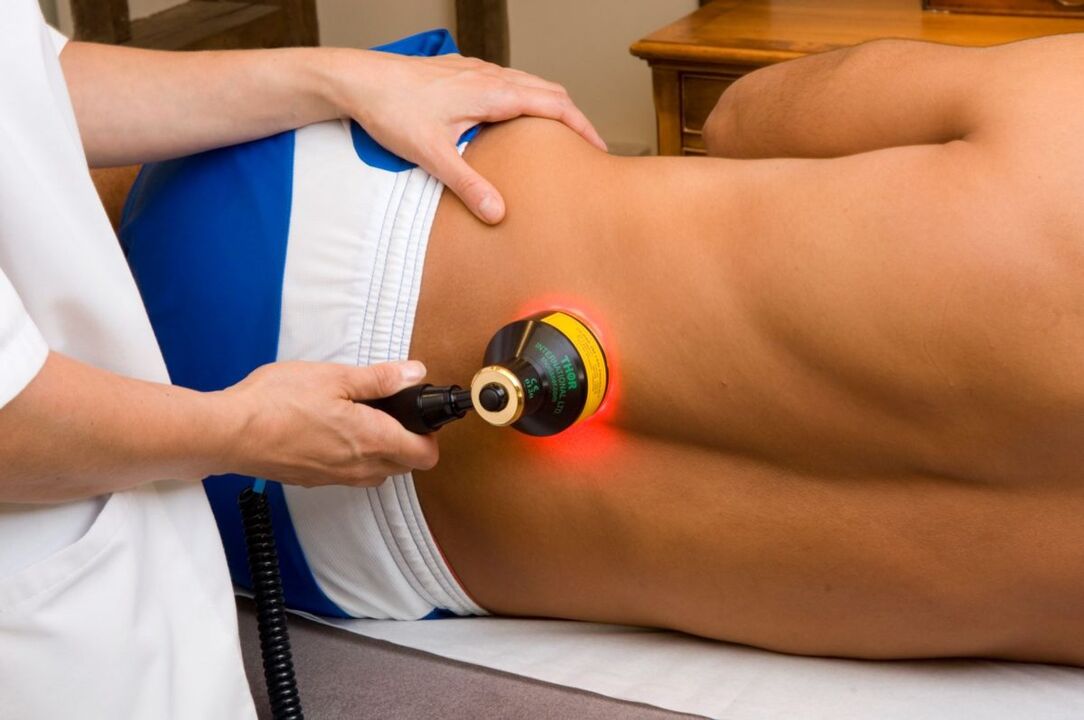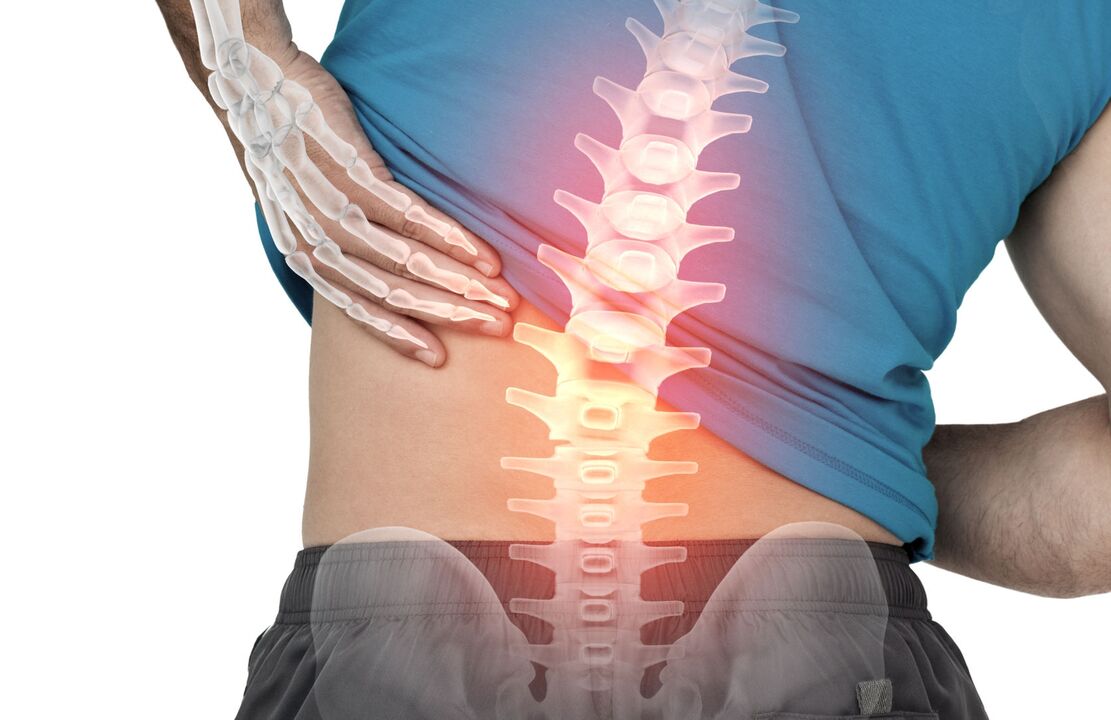The number of patients with osteochondrosis increases every year and the disease is very young - a few decades ago, this problem is primarily concerned with elderly people, but now you can often feel for those who have the 30 most common forms of batteries and republic osteochondrosis.In addition to constant pain that interferes with normal life, osteochondrosis without timely medical care involves severe complications, which means that it is very important to detect the first signs in time and to start fighting.

Where does osteochondrosis come from
The question is far from simple because there are indeed many factors that can provoke this disease.It can be both body physiological characteristics as well as an unhealthy lifestyle, diet or even a genetically widespread program.In general, the main causes of osteochondrosis of the lumbar region can be distinguished:
- Improper distribution of spinal load (improper posture, poor quality mattress or office chair, etc.);
- sedentary lifestyle;
- frequent stress;
- unhealthy habits;
- a small diet that leads to the lack of vitamins and trace elements;
- hypothermia;
- Pathology of the structure of the muscle bone system, such as curvature of the spine, flat legs, etc.;
- overweight;
- violation of metabolism;
- spine injuries;
- conveyed infectious diseases;
- chronic inflammatory processes, especially for arthritis;
- Genetic predisposition.
The risk group also includes people whose professional activities are subject to significant burden, such as athletes and those who have to be in the same pose for a long time: teachers, office workers, drivers, waiters, hairdressers, etc.
In addition, osteochondrosis is often in other diseases, such as liver or stomach tract (about 30% of patients), heart and women's inflammation and inflammation of prostatitis.In this case, existing pathologies provoke muscle and vascular cramps, causing oxygen starvation and dystrophic changes.Accordingly, the vertebrae and tissues that form intervertebral discs are gradually destroyed - forming osteochondrosis of the lumbar region.
The symptoms of the disease
Which signs can be recognized in the individual osteochondrosis of the lumbar spine, and it is realistic to do so until the disease has received momentum?Unfortunately, in the early stages, this disease is in many cases almost asymptomatic and causes slightly unpleasant discomfort in the back, most often for normal fatigue.This is the main danger - although osteochondrosis can continue to cope without consequences, it is difficult to recognize, and when the problem becomes obvious, it is much harder to slow down the pathological processes.
The most important sign of this pathology is severe back pain, which often spreads back, buttocks and legs.In the first stage, it is predominantly painful or stretched and occurs only after physical effort or sudden movements.Over time, the periods of relative break, when the patient does not feel pain and discomfort, becomes shorter, and the lower part gradually becomes discomfort by his permanent companions.In addition, there are aggravations when the pain becomes intense and sharp, and even the most significant load can provoke an attack until coughing or sneezing.
There are other signs of lumbar osteochondrosis:
- the stiffness of movements;
- a decrease in sensitivity and tingling in the legs;
- Sweating violation;
- muscle weakness;
- Dry and peeling of the skin.
In the final phase, patients may be difficult to control the urination and emptying of the spinal cord, and male patients involve erectile dysfunction.
The degree of osteochondrosis of the lumbar

Total 4 main stages of the development of the disease can be distinguished.For 1, the deformation of intervertebral discs is poorly expressed - these are small cracks inside the fibrous ring, which cause discomfort.Degree osteochondrosis is characterized by paroxysmal pain, which occurs only with sharp movements and lifting weights.We are talking about lumbago, ie the bastard at the lower back, in response to changing the unpleasant position of the body.In addition, patients often suffer from muscle cramps and swelling in stages of the disease.
Degree lumbar osteochondrosis begins with lumbalgia - increasing pain and discomfort occurs regularly, and for good improvement, it is not enough to go to bed and relax a little.The process of destroying the fibrous ring continues and the vertebrae themselves gain unhealthy mobility - the distance is reduced and the nerve endings are pinched.As a result, the patient has intense pain, as well as an alternative to heat and cold, increased sweating and numbness of the skin.
Stage 3 of osteochondrosis is a period of intervertebral hernia.The fibrous ring is interrupted and the contents of the seed that pushes the blood vessels and nerve roots fall out.At the same time, the patient is tortured by acute pains that are almost uninterrupted.Occasionally, sensitivity in the affected area decreases or disappears completely, in other cases, on the contrary, it increases painfully and has a feeling of tingling and combustion.At this stage of osteochondrosis, even a non -specialist may notice the deformation of the spine - patients develop the curvature of the spinal column according to the type of lordosis, kyphosis or skoliosis.
Degree of the disease is the most severe - the spine is very deformed, patients suffer from constant pain, and for them all motion becomes a real problem.The reason for this is the almost complete destruction of the intervertebral discs, which results in the maximum convergence or even in contact with each other.In this case, tightening of the spinal cord may result in paralysis of the lower limbs.If you do not start treatment on time, step into Section 4, you will be able to people with disabilities for the rest of the life of osteochondrosis.
Diagnosis of osteochondrosis

Because of the lower back pain, most patients first give advice to the therapist, who, if there are appropriate symptoms, is further examined by a neurologist.This, in turn, takes control, collects anamithesis and prescribes hardware tests to make an accurate diagnosis and to determine the neglect of the disease.
When collecting anamitesis, the main task of the specialist is to learn about the nature, localization, intensity and duration of discomfort, and understand the frequency of worsening of the disease, which usually prevents and what measures to the patient.In addition, the patient's lifestyle, the usual diet, the characteristics of professional activity, injuries and existing illnesses, including inherits, are important.
The control allows the patient's motor capabilities (posture, walking, movement), evaluating the presence of audio and muscle cramps, and sensitivity levels in the affected area.
At the same time, you can only get a complete picture with hardware research: radiography, CT and MRI.The X -Ray allows violation of spinal structures, assessing the condition of intervertebral discs, and timely recognizing a tendency to reduce lumen between the vertebrae.In this case, computer tomography is more informative - allows you to literally look at the inside of the spine and study existing pathologies.And MRI, on the other hand, provides exhaustive information on the condition of the spinal cord, nerve endings, muscles and blood vessels, which is not only a diagnosis of "lumbar osteochondrosis" but also the degree of neglect of the disease.
Treatment methods

Patients need complex therapy to succeed in lumbar osteochondrosis, including drug treatment, physiotherapy, special gymnastics, massage, and conventional medicine recipes that improve the use of conventional methods.
The priority task that needs to be solved by starting the treatment of lumbar osteochondrosis is relieved of pain syndrome, as many therapeutic methods, such as physiotherapy and exercise, should not be used during the disease.For this purpose, patients are prescribed by painkillers and injections, as well as non -steroid anti -inflammatory drugs.The latter is the main component of drug treatment of osteochondrosis - not only deal with symptoms, but also affect the causes that provoke their appearance.In the most difficult cases, glucocorticosteroids are used to overcome the inflammatory process, which is most often introduced directly into the deep tissues of the harmful zone with novocaine or lidocaine.
In addition, patients with osteochondrosis need preparation for the removal of muscle cramps - anticonvulsants and muscle relaxants, chondroprotectors that restore damaged cartilage tissues and Group B vitamins that strengthen the body's protective function and reduce inflammation.
After pain painting, physiotherapy procedures come to the fore in the treatment of osteochondrosis.We are talking about laser therapy, magnetic therapy, ultrasound, electrophoresis, acupuncture, sludge bath, paraffin applications, etc.About its use, which actually cope with discomfort and pain and record the result from taking medication.
An important place for the fight against osteochondrosis in the lumbar region is distracted by physiotherapeutic exercises - with regular implementation, practically designed practices specifically improve the patient's condition, almost completely returning to freedom of movement.And professional massage promotes the consolidation of successes that perfectly reach muscle cramps.Non -Traditional Medicine, which offers osteochondrosis, is not only not included in this issue, not only effective in combating the disease, but also safer than many synthetic drugs.
Why is lumbar osteochondrosis dangerous?

In addition to intense pain, who often makes the life of a patient with lumbar osteochondrosis indeed unbearable, people with such a diagnosis are limited by motor skills, and some may be completely lost in the final stage of the disease.We are talking about the paralysis of the lower limbs, which may result from compression of the spinal cord.In the most extreme case, osteochondrosis can even lead to death if the spinal peel causes significant damage.
But without reaching 4 stages, lumbar osteochondrosis seriously undermines human health.It often ends with the development of intervertebral hernia, which requires prolonged and complex treatment and, in some cases, requires surgical intervention.In addition, the tightening of osteochondrosis blood vessels can lead to dangerous stagnation and violate the work of other internal organs.In patients with such diagnosis, the geniturinary system often suffers - lumbar osteochondrosis is capable of providing problems with ovarian, uterus and appendices in women, and erectile dysfunction of men.
Obviously, recognizing the symptoms of osteochondrosis, starting help and starting complex treatment - the task is extremely important.But the role of prevention is no less important on this issue - it can help reduce the risk of developing the disease and maintaining good health.We are talking about regular but moderate physical efforts, a healthy lifestyle, a balanced diet, compliance with the alcohol consumption system, and expertise examination, who can identify possible problems in the earliest stages.
It should be remembered that the lumbar region of osteochondrosis is a serious disease that is extremely dangerous to health to ignore the symptoms.Only by timely recognizing the disease and starting treatment can slow down the pathological processes and return to the patient to provide an opportunity to conduct a usual lifestyle.Otherwise, the consequences may be the most regrettable, to the disability that the patient will no longer be able to get rid of.

























